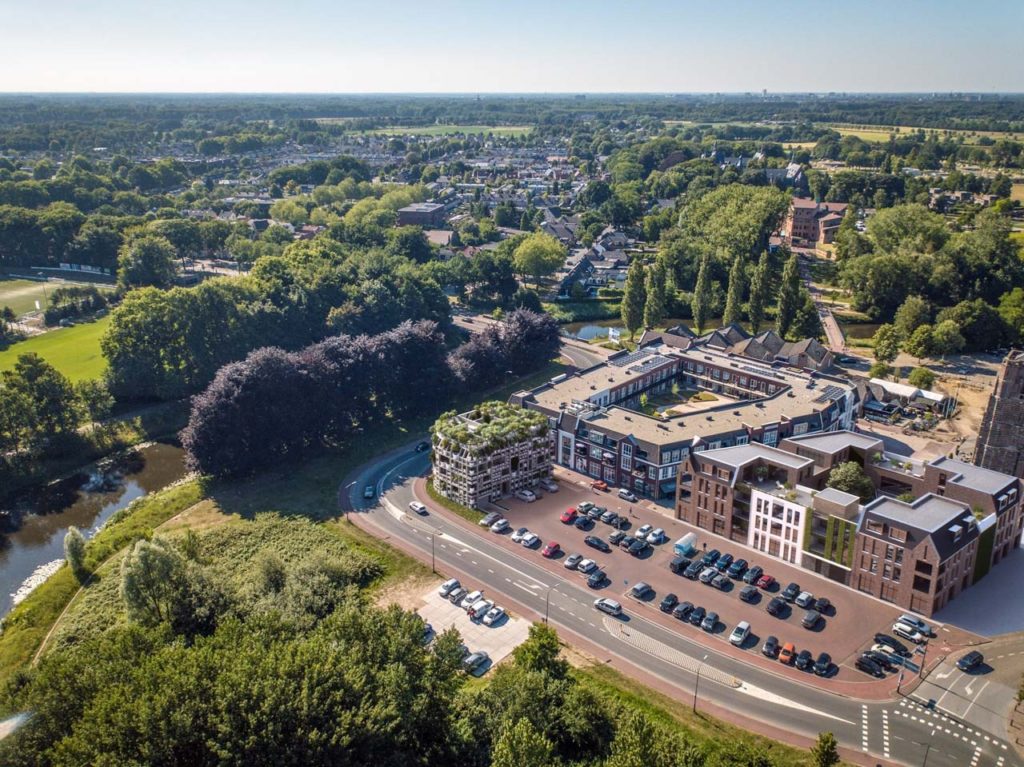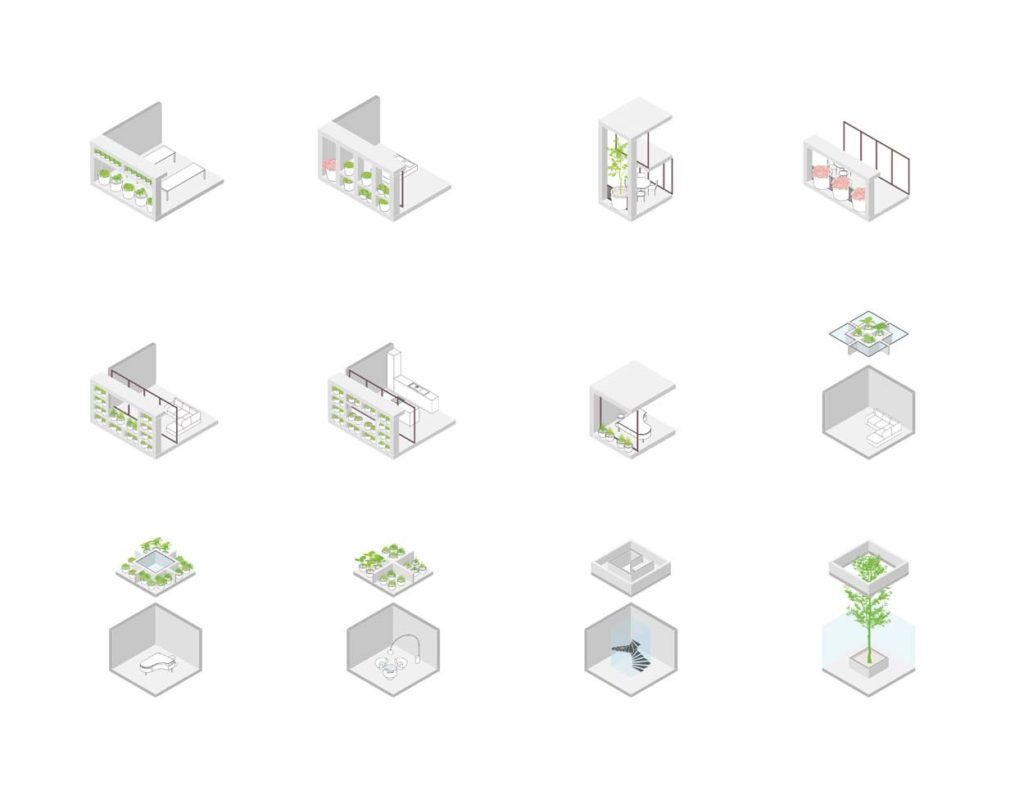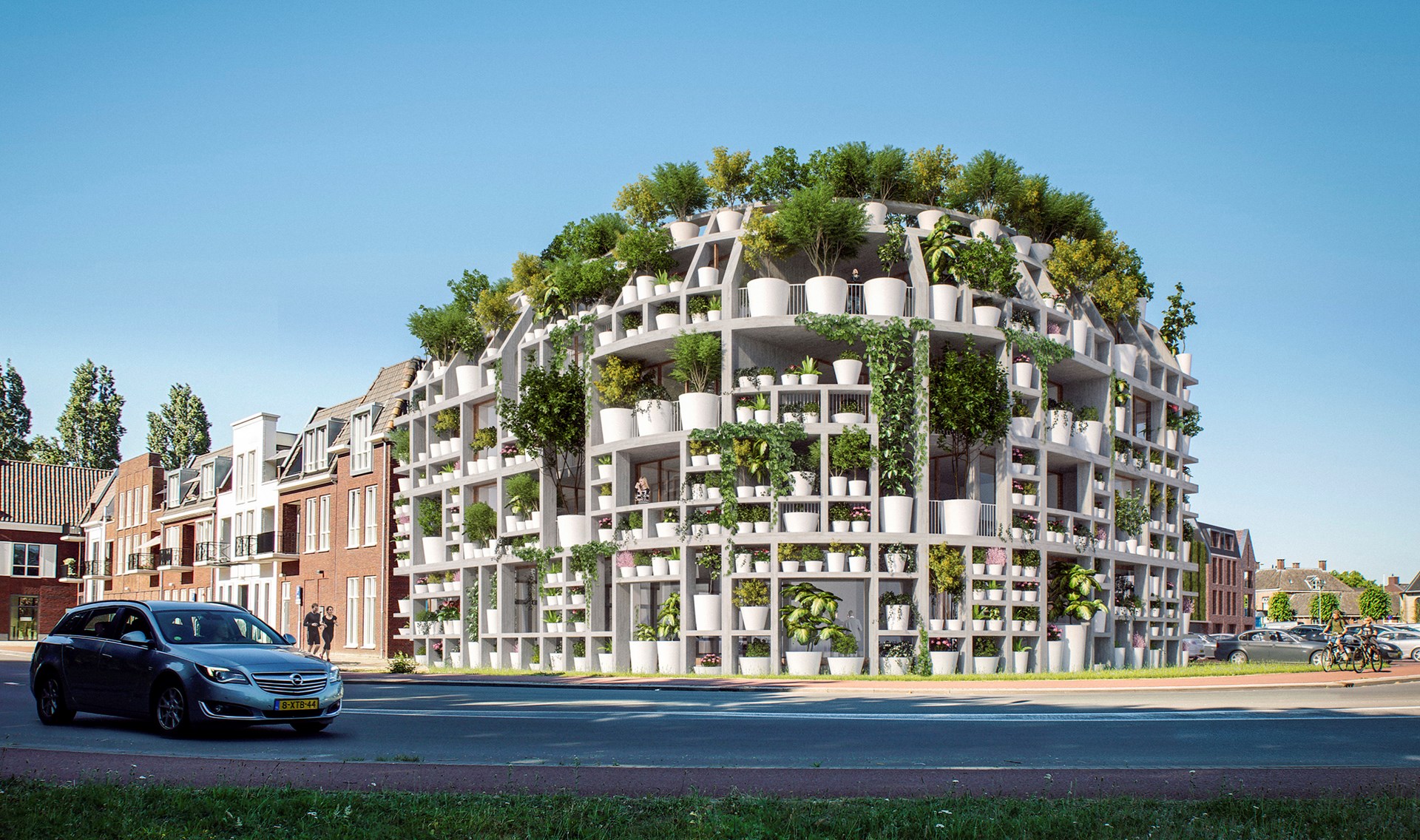MVRDV has designed a small office and residential building using a gridded “rack” system to cover the building’s entire exterior in a variety of potted plants and vegetation.
The 1400 sqm, four-storey Green Villa adopts the urban form of the neighbouring buildings, while the plant covering helps it blend into the bucolic landscape of the nearby river, fields and trees.
Containing a new office space for a real estate developer on the ground floor, five apartments on three floors above, and underground parking, the Green Villa creates a landmark project for the surrounding village while also being socially conscious and environmentally progressive.

The design adopts the mansard roof shape of the neighboring buildings,but deviates drastically from the other buildings on the street in its materiality; a “rack” of shelves, of varying depths, hosts an abundance of potted plants, bushes, and trees such as forsythias, jasmine, pine, and birch. This approach stems from MVRDV’s belief that sustainability implies not only a technological challenge, but also a positive change in lifestyle, with urban areas considered as a part of the natural landscape.
“This design is a continuation of our research into ‘facade-less’ buildings and radical greening. The idea from the nineties of city parks as an oasis in the city is too limited. We need a radical ‘green dip’: as will be shown soon in a book by The Why Factory with the same title, we should also cover roofs and high-rise facades with greenery. Plants and trees can help us to offset CO2 emissions, cool our cities, and promote biodiversity.”
Winy Maas, founding partner of MVRDV

The structure of the Green Villa is based on a square grid four bays wide and three bays deep. MVRDV developed a catalogue of varying space modules, such as bedrooms and living spaces, to place within the grid. A similar catalogue is used to populate the façade, resulting in a three-dimensional arboretum, a plant and tree library, complete with nameplates and additional information. The plant species are selected and placed with consideration of the façade orientation and the living functions behind, providing either privacy, shade, or views as required. A sensor-controlled irrigation system that uses stored rainwater has been incorporated into the planters, guaranteeing a year-round green facade.


The Green Villa was designed by MVRDV in collaboration with Van Boven Architecten, who also serve as the project’s developer. Construction is scheduled to start in 2020.






